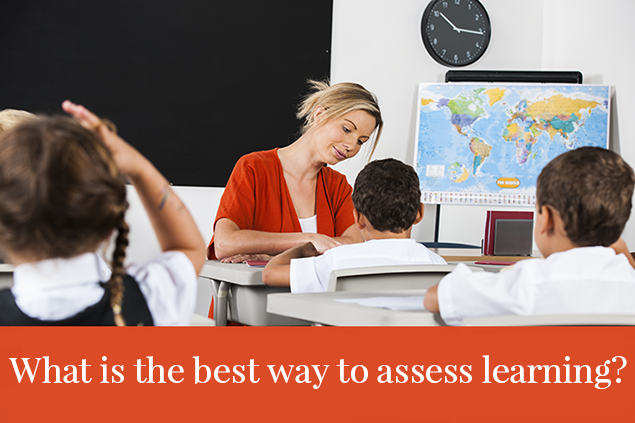What are the Types of Assessments that Teachers use?
Posted by Network Support · Leave a Comment
Changing the way you assess student learning can significantly improve your teaching effectiveness…
It is an uncontested fact that evaluating is an integral part of educating students. It determines whether or not the goals of education are being met. Teachers and parents use test scores and feedback to gauge a student’s academic strengths and weaknesses. Communities rely on these scores and feedback to judge the quality of the educational system. State and federal lawmakers use these same metrics to determine the schools’ standards. Put simply, one could say a founding theory is: You can’t know where you’re going unless you know where you are.
What is especially important for teachers, before picking any form of evaluation, is to have clearly stated goals. Such clarity will help them to decide an effective course of action. Below are some specific tools for assessing student work.
Assessment FOR Learning
Creative ways of evaluating students make the assessment process less intimidating and can also help reveal more. Techniques that teachers can use to take stock of the learning process and what point or level the students have achieved are listed below.
Index Card Summaries/Questions: Periodically, distribute index cards and ask students to write on both sides, with these instructions: (Side 1) Based on our studies, list a big idea that you understand and write it as a summary statement. (Side 2) Identify something that you do not yet fully understand and write it as a statement or question.
Misconception Check: Present students with common or predictable misconceptions about a designated concept, principle, or process. Ask them whether they agree or disagree and to explain why. The misconception check can also be presented in the form of a multiple-choice or true-false quiz.
Student Conference: A one-on-one conversation with students to check their level of understanding is considered a conference.
3-Minute Pause: This sort of a quick break in the middle of a class provides a chance for students to stop, reflect on the concepts and ideas that have just been introduced, make connections to prior knowledge or experience, and seek clarification.
Observation: There is a lot that a teacher can gather about students by keeping a keen eye on them. Walk around the classroom and observe students as they work to check for learning. You can make anecdotal records, have checklists, and then build up to individual interactions with the students.
Entrance Tickets: Teacher asks a question at the start of a lesson and students write their responses on index cards or strips of paper. These are used to assess initial understanding of something to be discussed in the current lesson or as a short summary of understanding of the previous day’s lesson.
Think-Pair-Share: Students think individually, then pair up and discuss with a partner, then share their ideas and learning with the class.
Assessment AS Learning
Helping students effectively reflect on their own learning process is a big step toward assisting their growth. When students regularly gauge their learning and knowledge they are able to communicate this with teachers, seek instruction to fill in the gaps, and assume a sense of ownership over their education. Here are a few ways in which teachers can encourage students to assess their learning.
Journal Entry: Students record their understanding of the topic, concept or lesson taught in a journal. The teacher reviews the entry to see how much the student has gained from the class.
Self-Assessment: A process in which students collect information about their own learning, analyze what it reveals about their progress toward the intended learning goals and plan the next steps in their learning. You could use the Reflection Template to help students take stock of their own work and gauge standards.
Portfolio: A portfolio is a purposeful collection of significant work, carefully selected, dated, and presented to tell the story of a student’s achievement or growth in well-defined areas of performance, such as reading, writing, math, etc. A portfolio usually includes personal reflections in which the student explains why each piece was chosen and what it shows about their growing skills and abilities. Putting a portfolio together is a good method of pursuing assessment as learning.
Assessment OF Learning
Some ways of evaluating how much students have grasped and can apply are listed below. A rubric, checklist, or other form of scoring guide should accompany such an assessment. Students should also be clearly and accurately informed of what the teacher is looking for in a lesson.
Performance Task: Students are asked to complete a task that will test a specific set of skills and abilities and determine what the students know and are capable of doing. A rubric, checklist, or other form of scoring guide should accompany this type of assessment.
Written Product: Students are asked to write an original selection. In addition, students may be asked to write about a previous activity such as a field trip or guest speaker. Students may also be asked to create a piece of persuasive writing or a reflection about their learning experience.
Oral Product: Students are asked to prepare an oral piece of work.
Multiple-choice Test: Students are asked to write a test at the end of a section, chapter, unit, theme, etc. to demonstrate what they know.
Standardized Test: Students are asked to create a test that is standardized in terms of content of the test and conditions under which the test is written.
Essay or Report: A detailed analysis based on the information shared in class.
Like this article for teachers?
Browse the Professional Learning Board COURSE CATALOG to find related online courses for teachers in your state. Professional Learning Board is a leading provider of online professional development classes that teachers use to renew a teaching license or renew a teaching certificate.





